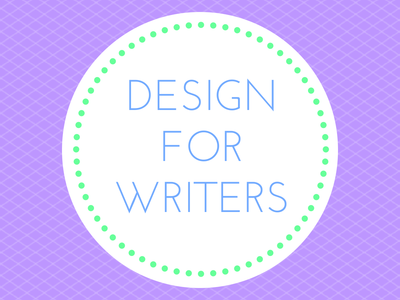5 Design Concepts Writers Must Learn

Content writers are increasingly expected to understand visual and design elements if they want to advance their careers. Here's a great place to start.
Content seems to get prettier every day. Where a basic blog template would have sufficed just a few years ago, competitive publications today are spending more time making posts graphically attractive in order to engage readers. Writers who desire to thrive in this world of aesthetic web content need to understand some basic design concepts. Here are five basic graphic design skills that any blogger or content writer wanting greater marketability should master.
See also: 99designs: How Our Designers Inspire Our Content Marketing [Interview]
The Web's Visual Landscape = Text + Design Elements
The layout is the basic visual landscape of any blog page, web page, app, magazine ad, business card, billboard, or similar medium. A layout usually consists of both text and graphic design elements. The success of a web page's layout hinges on arranging these elements within the boundaries of the page in a visually arresting and aesthetically pleasing way.
Good Design is Balance Between Positive and Negative Space
Composition is the effective use of positive and negative space in arranging design elements. Negative -- or blank -- space is just as important as positive -- or filled -- space in creating an appealing, balanced design that draws readers in.
See also: Minimalist Page Design for Content Marketing
Work Within one Family of Colors for Color Coordination
Good color coordination is the effective relationship of colors, including black and white, to create an eye-catching and visually attractive design. Often, working within one family of colors, such as cool -- blues, purples, and greens -- or warm -- reds oranges, and yellows -- is the most successful approach. While there are many more types of colors schemes that work well, blindly experimenting is generally unadvisable.
Typography and Layout
Typography is the use of lettering in a graphic design layout, whether it be in the headlines, subheads, paragraphs, photo captions, or general design of the text. Copy heavy design is when only (or mostly) typography is used to compose the entire layout. Paying attention to the typography of content is vital to ensuring cohesive design.
Visual Symmetry: Good Design that Matches Images with Words
At the end of the day, the overall creative objective is to produce a striking, dramatic or enticing visual symmetry between words and image. A dazzling visual landscape can effectively hook and absorb your audience. Design may seem daunting at first, but by taking advantage of the many design education resources and tutorials available on the web, you can start building a robust knowledge base and give your career a serious boost.
To Read More About Visuals and Writing, Click the Links Below:
5 Design Skills Every Writer Should Master
How to Convey Authority in Design
Responsive Web Design and the Issue of Optimal Viewing Across Different Devices
Published by Rose Kivi on Friday, July 18, 2014 in Design, Design Concepts, Layout, Typography, Visual Landscape, Writers.